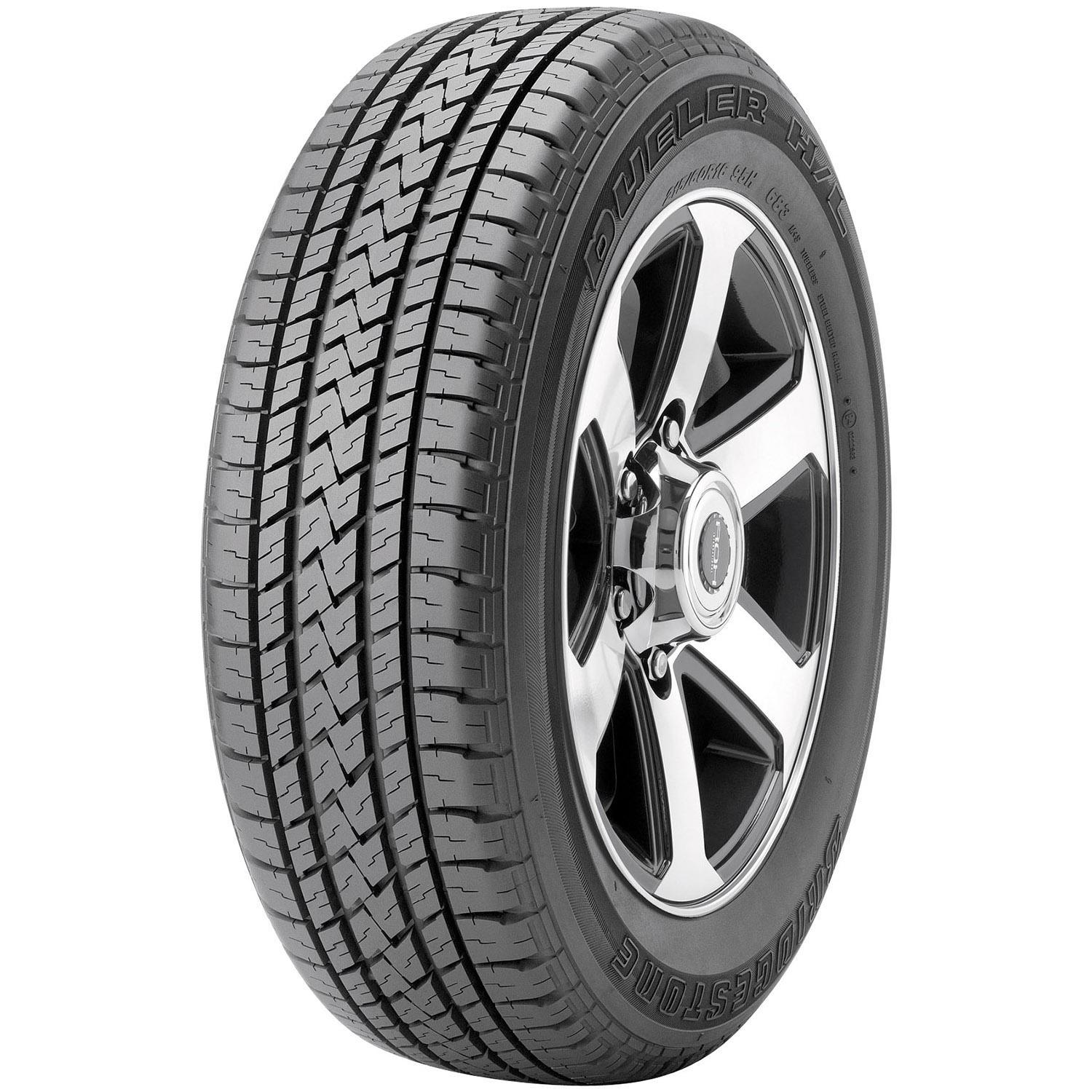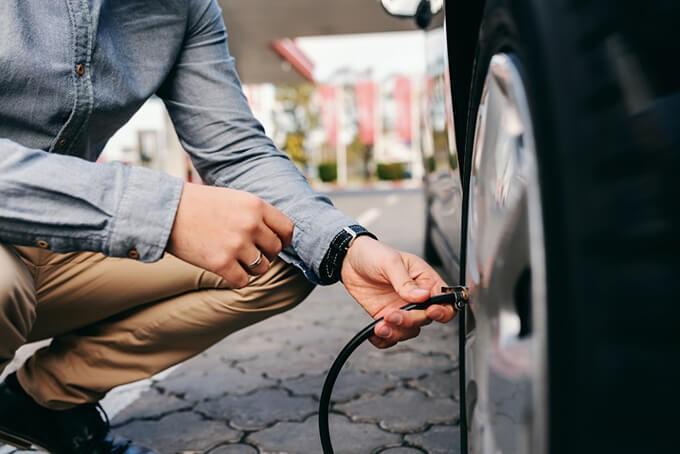2021-11-29 | Bridgestone Team
INSTRUCTIONS FOR TIRE SAFETY CHECKING AT HOME
Car tires are an important part, if the tires are worn or damaged but the driver has not detected it in time, it will affect the safety of driving. Driving safety depends on tire wear, tire pressure index, quality, and price of car tires. The following article shows you how to check tire safety in a simple way that can be done at home for drivers.
1. Tire wear check
Tire wear is an indicator of whether your vehicle is performing at its best. If the tires are not worn evenly, it means that the tires are not properly inflated, and the tires will be quickly damaged. The driver can observe all wheels to determine the position of tire wear. If you notice that the tire shows signs of wear in the middle of the tread, then the tire is often over-inflated. The reason is that the middle of the tire has the most contact with the road. Conversely, if the tire is worn on the sides, it means that the wheel is usually under-inflated. Therefore, the tire is often flat, the middle part of the tire has less friction with the road surface than the sides of the tire. To avoid uneven tire wear, the driver needs to inflate the tire to the standard tire pressure index printed on the sidewall.
In some other cases, there are a few scratches on tires. If wear is not detected for a long time, the tread at that location will be thinner, causing punctures or cracks. Under the driver's eyes, the cut is flat and bold. This wear usually occurs after a sudden brake, the car skidded, or has strong friction with the road surface. At this time, worn tires should be replaced with new tires. If the wear is not too severe, you need to take it to the garage so that the technician can grind down the part of the tire which is not worn to balance the tire.
2. Tire pressures check when inflating
a. Check standard tire pressure
In fact, many car accidents are related to improperly inflated tires with a standard pressure index. Therefore, the driver should check the tire pressure to know the exact amount of air to be inflated, to avoid problems when the tire is too under or over-inflated. The standard tire pressure of each car brand is printed on the door by the manufacturer. This is the recommended tire pressure index when inflating tires. For old cars that have changed tires, the new tires are not from the same brand as the original ones, the driver should check the pressure index printed on the tire sidewall. The pressure index printed on your vehicle's doors may not be compatible with new tires. Instead, the driver needs to choose the right index for the new tire.

Tire pressure index is printed on the sidewalls of the tires
b. Measure tire pressure before and after inflation
Before inflating the tires, the drivers need to measure the tire pressure with a specialized tire pressure gauge. Tire pressure measurement needs to be done at room temperature, about 21 Celsius degrees to avoid being affected by the weather. Then, compare with the standard pressure index to know if the tire is under-inflated, whether it is in needs to be inflated or not. The most appropriate tire pressure is equal to the standard pressure recommended by the manufacturer. However, tire pressure should be adjusted according to the climate. Especially in summer or hot weather, it is advisable to reduce the amount of air that is pumped into the tires. Conversely, in the winter or when the vehicle is in a cool garage, the amount of air should be adjusted higher than the standard tire pressure reading. When the outdoor temperature is balanced with room temperature, the tire should be inflated to the correct pressure index.

Tire pressure should be measured before and after inflating
3. Tire deformation check
Deformed truck tires such as bulging or cracking can cause an explosion or puncture when traveling on the road. Before starting the engines, drivers should check whether the tire is inflated or cracked. In case of bulging or cracking, the drivers need to take the car to the garage to change a new tire or have a suitable treatment. Before that, drivers need to find out about reputable car maintenance locations, a price list of car tires, and other support services.
4. Tire quality check
Tire quality is the criterion to ensure safety while driving. Some used or poor-quality tires will wear out quickly, causing problems on the road. Tire quality is reflected in the reputation of the brand as well as the price of car tires. Drivers should choose high-quality tire brands to find a tire that ensures safety, durability, and long life-span.
Bridgestone is a distributor of high-quality tires that come with long-term tire inspection and maintenance programs. Drivers can find information and the price list of Bridgestone car tires on the website or at the distribution facilities. Bridgestone has a wide range of tires from mid to high end, durable and long life-span. Drivers are assured of safety in all weather and terrain conditions when choosing to buy Bridgestone tires.
-
What are the car tire parameters and notes for drivers
What are the car tire parameters and notes for drivers
What specification does a car tire include and why is it important to know the tire specifications?
Learn more -
Winter and Snow Tires
Winter and Snow Tires
If you live in an area that experiences snowy or icy conditions in the winter months, hitting the road means paying close attention to conditions and adjusting your driving accordingly. But possibly the most important thing to do is install winter or snow tires.
Learn More -
Should we install a tire pressure monitoring system for our car
Should we install a tire pressure monitoring system for our car
Hệ thống giám sát áp suất lốp (TPMS) giúp theo dõi áp suất lốp theo thời gian thực, cảnh báo kịp thời khi lốp non hơi. Cùng Bridgestone Việt Nam tìm hiểu có nên lắp đặt TPMS hay không.
Learn more